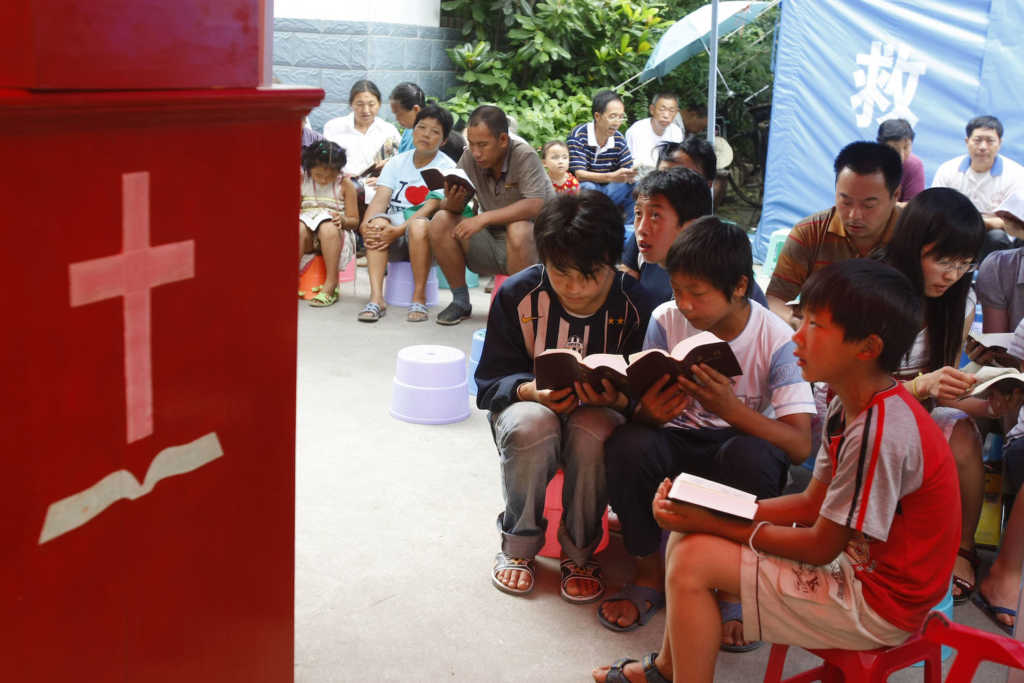A massive crackdown on religious freedom has for years been underway in China, where churches are being demolished, Bibles confiscated and posters of Jesus replaced with imagery of President Xi Jinping.
In China, the communist government sees the spread of the Christian faith as a Western threat to their culture and way of life. In 2016, Xi said, “We must resolutely guard against overseas infiltrations via religious means.”
‘We Hope That China Will Be Merciful’: Chinese Pastor’s American Family Plead for His Release
The Chinese government wrote religious freedom provisions into its constitution in 1982, but that hasn’t slowed the oppression of Christians living in the restrictive country.
WATCH: China’s Christians are facing a ‘massive wave of persecution.’ It's the most systematic suppression of Christianity in China since religious freedom was written into the constitution in 1982. pic.twitter.com/ZnyongUCAH
— Radio Free Asia (@RadioFreeAsia) August 10, 2018
According to a recent report from The Sun, Xi’s regime has gone so far as even barring children from visiting churches.
The most recent crackdown has reportedly been in the Xinjiang province, along the borders of Afghanistan and Pakistan. Government officials have called the region “not Chinese enough.”
As a result, Xi’s administration is requiring “Chinese characteristics” to be incorporated into all activities, religious beliefs and cultural traditions, a large part of which is adherence to the communist ideology.
‘Purge Against Christians’ Underway in China as Persecution Ramps Up
Xi began his push for the “sinicization” of the Catholic Church in particular in 2015, when he said the Church must be free of any “foreign influence.” Earlier this year, bishops in China jumpstarted an effort to bring the Catholic Church in the Asian country more in-line with the native culture.
And despite its claims of religious tolerance, in June, officials with the Chinese government tore down Christian imagery of Jesus from Our Lady of Mount Carmel in China’s Henan province, which has served as a popular pilgrimage for Chinese Catholics since the very early 1900s.
One religious source on the ground told the Catholic News Agency at the time that the Communist government would “allow Catholicism to exist but not develop.”
The Chinese government also destroyed the Liangwang Catholic Church in July, according to Asia News, even though the building was owned by the community and had been registered since 2006.
https://twitter.com/matthewschmitz/status/1020485733025447937
As for unregistered Protestant house churches, according to The Associated Press, Xi’s government once seemingly tolerated them. But that’s no longer the case. Now the Communist regime is taking a tougher approach that leans heavily on “thought reform,” a kind of political indoctrination.
In November 2017, Christian residents of a rural township in the southeast Jiangxi province were convinced by the government to replace posters of the cross and Jesus with images of the Chinese president.
“Xi is a closet Maoist — he is very anxious about thought control,” Willy Lam, a Chinese politics expert at the Chinese University of Hong Kong, told the AP. “He definitely does not want people to be faithful members of the church, because then people would profess their allegiance to the church rather than to the party, or more exactly, to Xi himself.”
There are also several instances in which the government confiscated Christian literature and Bibles. One such raid occurred in May, when government authorities stole more than 1,000 Chinese Bibles from five house churches in the Shandong province, claiming it was part of an effort to quell the spread of pornography in the sprawling country.
All of this is part of the government plan to “Sinicize” churches, both Protestant and Catholic.
“Only Sinicized churches can obtain God’s love,” the government stated.



